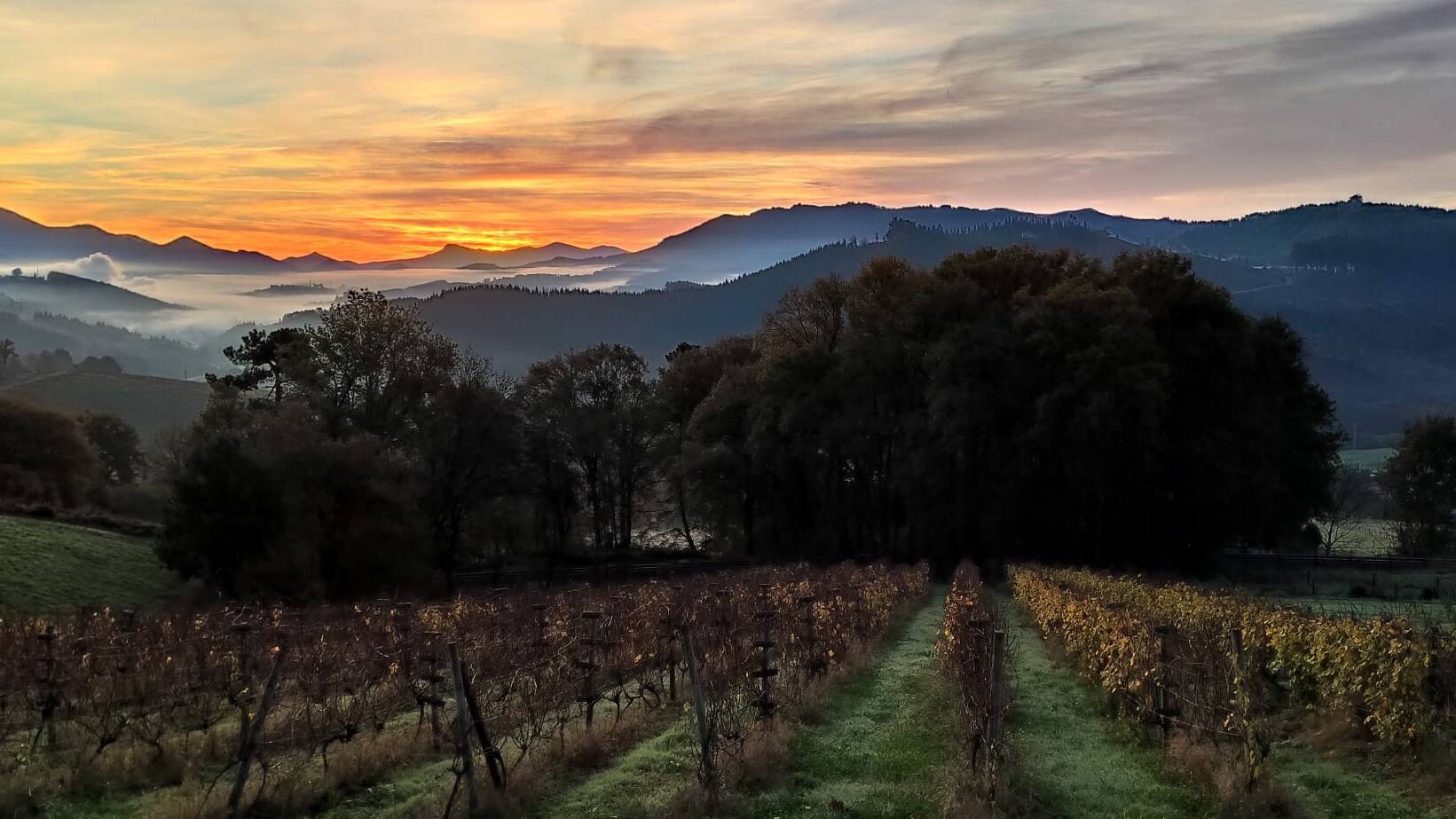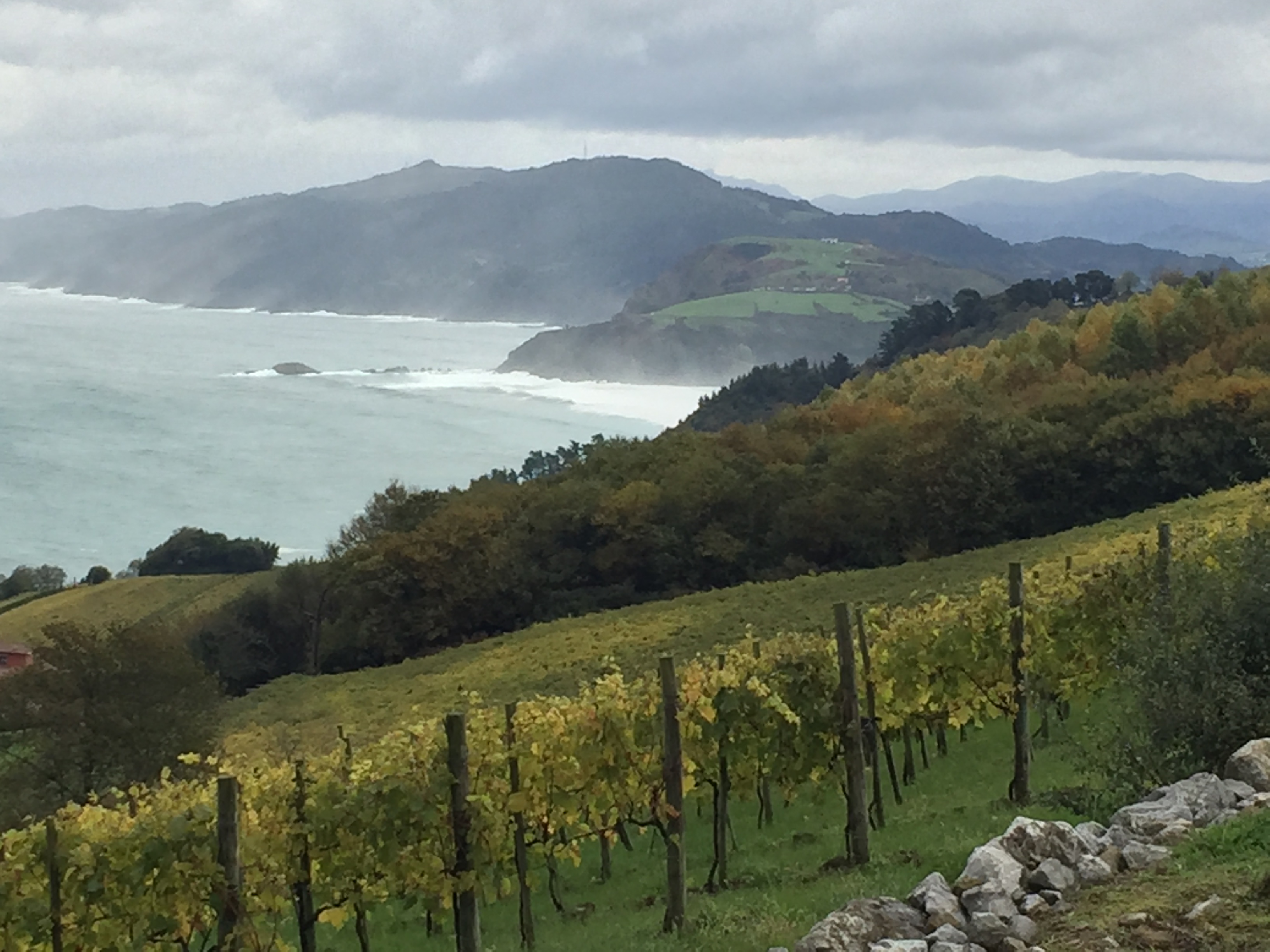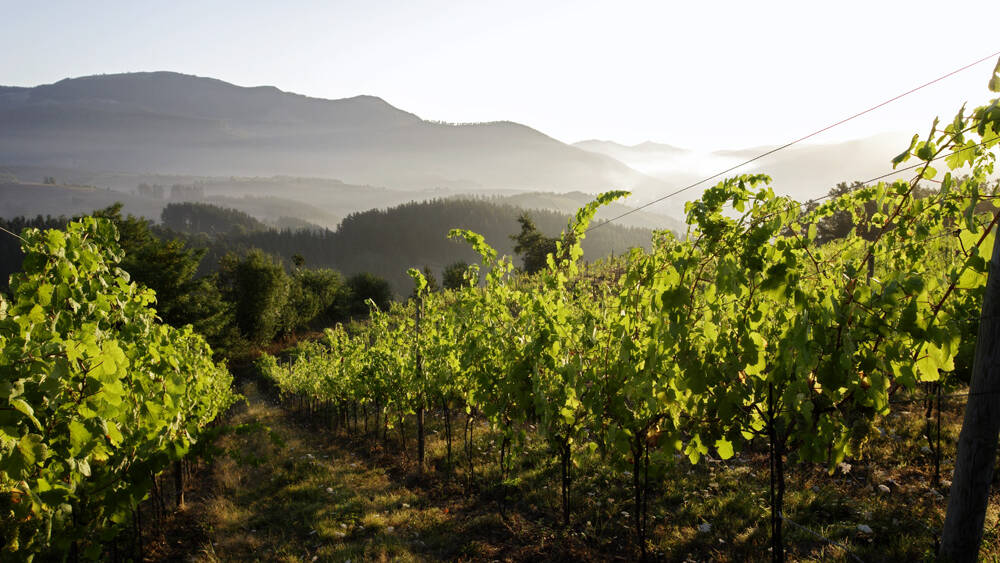A quest to bring the vineyard back to life
The countryside, the skin of the planet, is first to experience the allergies resulting from these new developments.

There was a time when talking about txakoli meant talking about acid wines, with a slight residual carbon dioxide and an easy, citric drink. Essentially, txakoli wineries were small winemaking houses that produced wine to supply Basque taverns with no other ambition than to make their own wine for drinking that would allow them to make a living. The progress made in the search for distinctive local wines meant that wine lovers, eager for new wine experiences, looked with interest at these wines produced with varieties as resoundingly local as the hondarrabi zuri and hondarrabi beltza. It was precisely this public attention that served as a catalyst for many wineries, which began to feel the need for their wines to cross borders and for txakoli to be seen through different eyes.
The world of txakoli is deeply rooted in the local culture. The three denominations of origin of txakoli, those of Álava (Arabako Txakolina), Guipúzcoa (Getariako Txakolina) and Vizcaya (Bizkaiko Txakolina), approach txakoli from the identity of its own origins, making txakoli a wine with multiple faces.
Due to their location in the northernmost part of the Iberian Peninsula, these three appellations and therefore their wines are exposed to and defined by a purely Atlantic climate. Probably the most Atlantic and marked influence that exists in Spanish wine, even above areas such as Rías Baixas. Due to its location, we can make a distinction between the coastal appellations, Getariako Txakolina, the inland one, Arabako Txakolina, and those that combine the two, such as Bizkaiko Txakolina.
This location marks, as it could not be otherwise, the style of the wines and it does so doubly; due to the undeniable influence of the sea, but also because of the population's travel interest of each growing area. Bilbao, being one of the leading cities of Spain, has much more business than its neighbours, and for this reason it is much more open to evolution and change. The first big change in txakoli came precisely from the Denominación de Origen that is closest to the city, Bizkaiko Txakolina.
Bizkaiko Txakolina was the first of the three txakoli appellations to want to initiate a change. Its first steps were centred on trying to get the bodegas to modernise their facilities and, most importantly, to look for txakoli wines that were closer to the concept of white wine than to txakoli itself. The merging of wineries was also encouraged with the aim of enabling Basque winemakers in Biscay to compete with a slightly higher volume against other Spanish wineries.
Although there was a bit of everything in this period of change, with more successful moves than others, the steps that were taken were executed correctly. Moreover, behind all these changes was planted the seed of the internationalisation of their wines, something that would come little by little. As the bottlings began to improve in quality, trust and reliability in the area grew.
While the first initiatives in favour of change were based on accepting new varieties to their native range of grapes with international incorporations such as chardonnay, sauvignon blanc and riesling, or adding new creations to their wine portfolio, as was the case with the Bizkaiko sparkling wines, time gradually led them to focus on two more important aspects: the vineyard and the winemaking process.
The first big change came from the winemaking side. They began to work on new ways of expression, through wines fermented and aged in barrels and also aged on their own lees. It was precisely in this second line that Bizkaiko hit the nail on the head.

Year after year in the Peñín Guide we announced the development of this type of wines and we also encouraged these producers to work along the lines of ageing in the bottle, which is the key to all wines in the world that have great acidity and that want to move from the wine of the year to the concept of aged wine. And the boom came, and it came from the hands of this Denominación de Origen, the most cosmopolitan and populated by wine producers of the three.
The gastronomic txakoli was born, a wine with more intense mouths, capable of lasting throughout a meal and not only that, but also of being at the height of great celebrations. It was understood that their wines could age well, but that in order to do so they had to be precise and careful in their work in the vineyard. And here came the second great event, when winemaking and vineyard work came together to favour the creation of great white wines, the great Basque txakolis.
As you can imagine, all the txakoli producers in the Basque Country had one eye on their wines, but with the other they also kept a close eye on what their closest competitors were doing, so that the growth of Bizkaiko somewhat stirred up change in its neighbours. Getariako Txakolina was the second to begin to reflect these changes in its winemaking through the sensitivity of certain wineries. Some wineries in Getaria have focused not so much on obtaining more international wines but on developing their local style, and have opted for longer ageing, both with and without lees. Many producers here preserve the classic txakoli bubble to keep its essence intact, while striving to produce better wines. The evolution of Getaria wine has been slower than in Bizkaiko, but presumably time will work in favour of this small Denominación de Origen where wines with greater complexity arrive every year, if they play well the hand of representing origin and style.
 Getariako Txakolina's vineyard
Getariako Txakolina's vineyard
Of the three appellations of xakolí, that of Álava has been the most hermetic of them all. It is the smallest, the one that has had the fewest producers and the one that has had the most difficulty in transcending its borders. Initially, in the Peñín Guide we put this down to the lack of producers of higher volumes, who, with a production so small that it was only enough to supply their nearest premises, had no need to look for buyers outside their borders.

This lack of commercial need and the fact that it is geographically more isolated than Getariako and Bizkaiko, led to something that we are used to seeing in the more remote wine-growing areas, maintaining a pure style free from external influences. In Arabako we can still find good examples of the original txakoli, acidic, floral and with a light and pleasant bubble. Of course, each txakoli production area offers a different vision, which is fortunate for those of us who are looking for original wines far removed from the standardisation of global wine.
The countryside, the skin of the planet, is first to experience the allergies resulting from these new developments.
Six women in wine talk to the Peñín Guide about how they have managed to carve out a niche for themselves in the world of wine
If you mention the term "flor" or biological ageing to wine connoisseurs, their mind is instantly blown and their eyes widen like platters